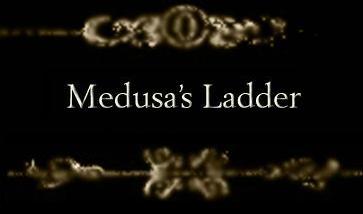|
|
|
|
|
|
|


|
4.10.10 The DNA of Macramé I recently watched the film The Fourth Kind. It wasn't a good movie, but it certainly has a whirlwind of Trickster dynamics about it that triggers my interest. The supposedly "real" footage was dreadfully unreal. For anyone who hasn't seen the film, the movie makes use of supposedly real archived video, and interweaves it throughout the story, juxtaposing it with the fictionally recreated scenes. At times, when a new character is introduced, captions appear on the screen giving the name of the actor portraying the real person. However, there is no real footage—the entire story is fiction. I can't imagine anyone taking the "real" footage at face value. Forgetting the unlikelihood that this kind of footage would first emerge publicly in a film this way—the real people are obviously acting, and even the setting details--it's like they didn't even try to make it look convincingly real. A real therapist's office in Nome, Alaska, straight out of a Pottery Barn catalogue? I'm sure it would be more like fluorescent lighting hung from dropped ceilings, wood paneling, and 1993-era Office Depot furniture. I don't have anything against the insertion of the "False Document" device—and I don't think as it is used in The Fourth Kind falls into hoaxville. The False Document is a legitimate narrative frame, and has been used classically and interestingly. Literary-wise, it is the appointment of fictional documents, usually set apart from main body of the text somehow, as explanatory, stylistic, or apologetic . It is a way that the author (or director, actors, etc.) can insert him or herself into the fiction, and there's often a notion of confrontation—even a breaking of the so called-"fourth wall"—in which fictional characters confront the audience, or confront the idea that they are fictional—ideas of authenticity and real vs. fake are explored. Thinking of accepted and unquestioned fictional employments off the top of my head, I came up with The Custom House introduction in The Scarlet Letter, Frankenstein, Dracula, and Don Quixote. Knowing Wikipedia would likely provide a list of works using this device, I looked it up, and just glancing at the titles, I realized Trickster is undeniably present. Almost every usage of the false document listed is tied to occult, Fortean, paranormal, sci-fi, horror, or otherwise fantastical topics. Of course, it is easily deduced that the very reason the device is used is to because of the implausible nature of the topics. And of course, abduction , aliens, and UFOs are among those topics. Considering it further, I realized how deeply this technique is woven into the overall UFO narrative. Real vs. fake, —the very notion of "authenticity" itself along with confrontations of identity--can usually be uncovered at the heart of UFO narratives, whether presented as real, fictional, hoax, or a combination. The blurring is part of the point—that questioning. There is a huge precedent of the False Document device in UFO stories. Some of the most intriguing ideas , having nothing to do with fiction, either literary or filmic, even have to do with actual, tanglible false documents such as *MJ-12, the CARET document, the letters involved in the Guardian case, to name only a few. Within fiction about UFOs, the False Document device seems to fit like a glove. The Orson Wells War of the Worlds broadcast may be a very early example. In the 1990s, during the full blossoming of the contemporary UFO narrative, there were a multitude of fictions using it, some to extreme extents, crossing mostly over into hoax territory, such as with Alien Autopsy.
I was surprised to see that the False Document in Fourth Kind was taken seriously. It seemed so obviously a device. Nevertheless, there are blog postings and various attempts to show or prove the "real" people are actors, and accompanying skeptical comments.
There is a strange account written in the Wikipedia listing for the film. Under the section entitled "Marketing campaign," this confusing story is related:
It doesn't seem to me that there was an intention to make the fictionalized videos and stories in the story—the False Document—actually real. The whole thing seems to be wrapped around getting at the ideas of real/unreal and authenticity/identity itself, and muddling and blurring of boundaries and confines begins to happen. The commentaries on forums and blog postings seem to confirm this—the arguments end up centering not necessarily on aliens and abductions, but how we can know if something is real or fake, and even how those things can be defined. Tied to UFOs, are these questions about real vs. fake and identity and authenticity avoidable? Are UFOs simply a device we use to be able to ask those questions, or are the questions some kind of prerequisite to go further, whether it be continuing on with UFOs and aliens, or some other kind of answer found inside? *Or, more correctly, documents that have substantial claims of falsehood. Sources and further reading: False Document, Wikipedia,
Visit Richelle's blog: Beamships Equal Love
|